Hit the Range: Why the Pocket-Sized Sig Kilo 2000 Rangefinder is a Winner
Hit the Range: Why the Pocket-Sized Sig Kilo 2000 Rangefinder is a Winner
Back in 2010, I bought my first laser rangefinder (or “LRF”), a Nikon Prostaff 550. At the same time, I was pushing my maximum shooting distance further and further out. As a result, I quickly outgrew the limitations of the Prostaff, which as you may have deduced from the name, has a range-finding distance limit of 550 yards. A few years later in 2012, I competed in the Competition Dynamics 24-Hour Sniper Adventure Challenge; relying on my shooting partner’s Vortex and the ancient, mystic practice of doing the math.
Since that first purchase, I’ve watched commercial laser rangefinders become more powerful and less expensive. This past January at SHOT Show, I was able to take a look at the Kilo 2400 ABS from Sig Sauer. While the Kilo 2400 ABS was impressive, for my uses it was almost overkill.
The 2400 ABS has the ability to determine distances out to 2 miles and uses an internal accelerometer to determine the angle between the shooter and the target, then offering up an “Angle Modified Range” (we’ll get to that a little later). It also features an “Advanced Ballistics Computer” which can interact via Bluetooth with the iOS or Android application to track your specific ammunition and rifle details in order to provide shooting solutions, given your altitude, location, ammunition velocity and more. Additionally, you can physically attach a wind meter for providing data to determine windage.
How Laser Rangefinding Works
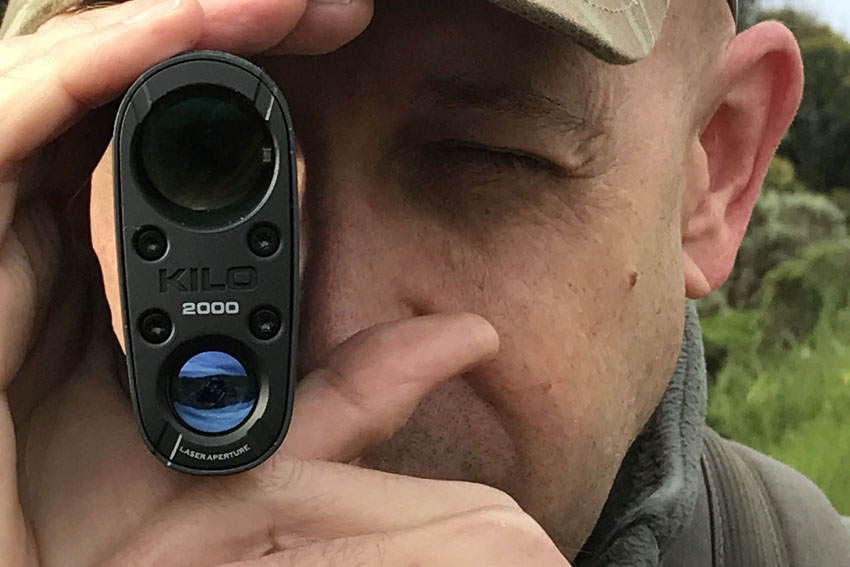
The basic premise of a laser rangefinder is simple; a device sends a laser beam out, which then reflects back. The difference in time between when the beam was emitted and when the reflection was received is used to calculate the distance between where the beam was sent from and where it was reflected, as the speed of the beam is known and constant (the speed of light).
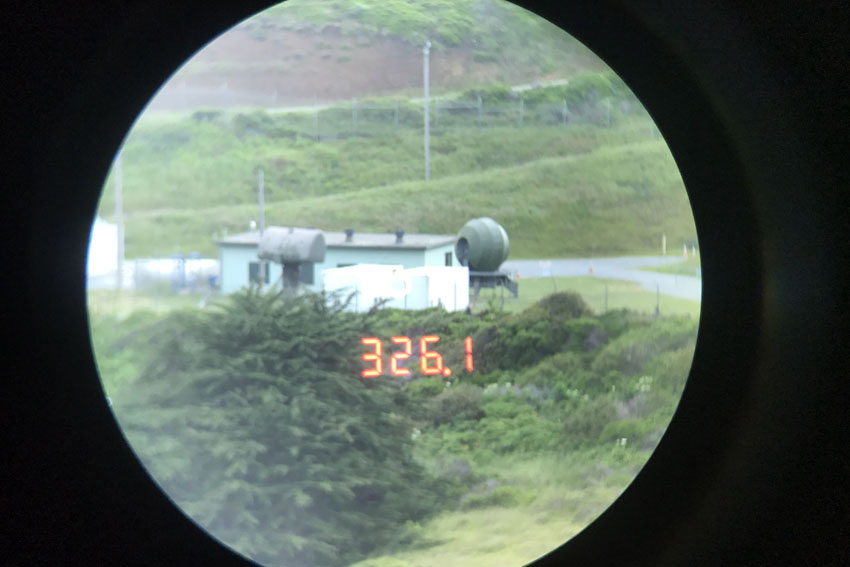
There are a number of factors that determine the accuracy of this process, including the power of the laser, amount of diffusion or divergence during emission, wavelength and frequency of the laser, the size of the aperture which receives the reflection, the magnification and clarity of the glass through which the user aims the laser and the means by which the device calculates the result.
Due to these factors, there’s a fair amount of discrepancy in the price range of various LRF’s. As usual, the old axiom of “Buy Once, Cry Once” applies, though my own adherence to this principle is in question, as I’m now the proud owner of two laser rangefinders. So in this case, we’ll go with the phrase “Two is One and One is None.”
An Excuse To Buy
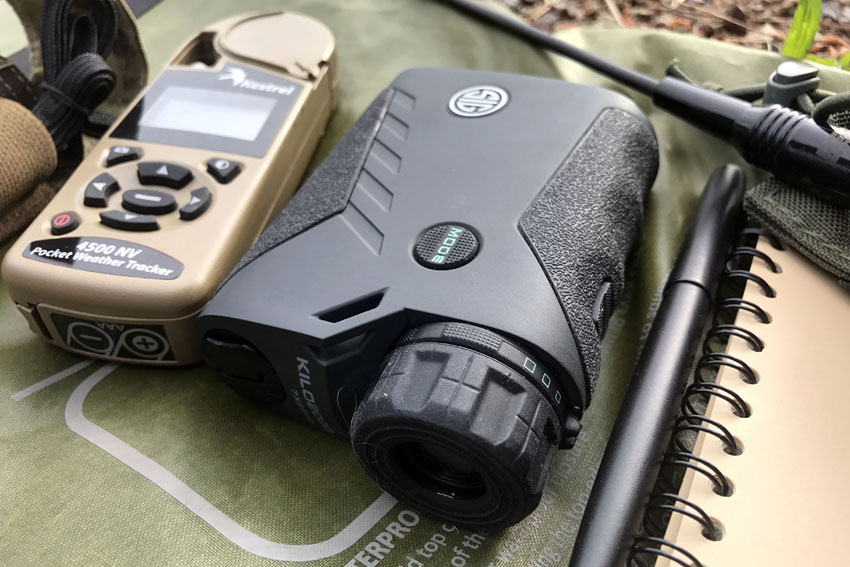
I am signed up to compete in this year’s 24-Hour Sniper Adventure Challenge and in the rules it states that contestants won’t be able to use network-connected devices that might aid in land navigation. That pretty much rules out using the Advanced Ballistics Computer feature of the Kilo 2400.
Also, given that I’m shooting .308 and my longest shot has been 1,360 yards, being able to range objects out to two miles isn’t really a feature I need either. Pile those reasons on to the price difference between the Kilo 2000 and the Kilo 2400 and my choice was relatively simple; the Sig Kilo 2000 claims to do everything I’d possibly need it to do for competitions like this one and more.
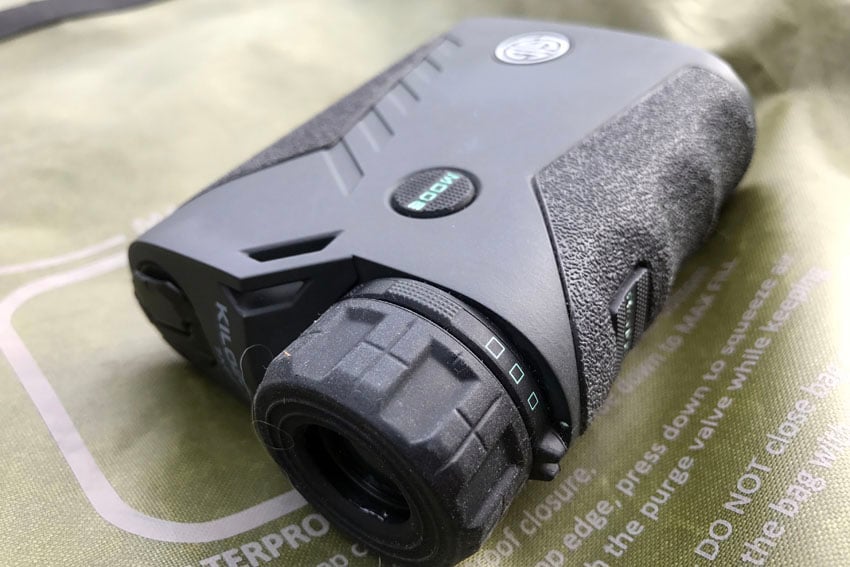
In a fit of consumer impulse buying (and without the express permission from my wife, bless her heart), I pulled the trigger on the Sig Kilo 2000 and waited a full two days for it to arrive. Since that time, I’ve had about a month to get a feel for it and have found more uses for it than I’d expected. I’ve used it to range targets while practicing my marksmanship, as well as determining distances from my home to the various buildings and other landmarks I can see from my back deck. I also found it surprisingly valuable in taking measurements for a contract physical security analysis client I performed work for.
Shooting
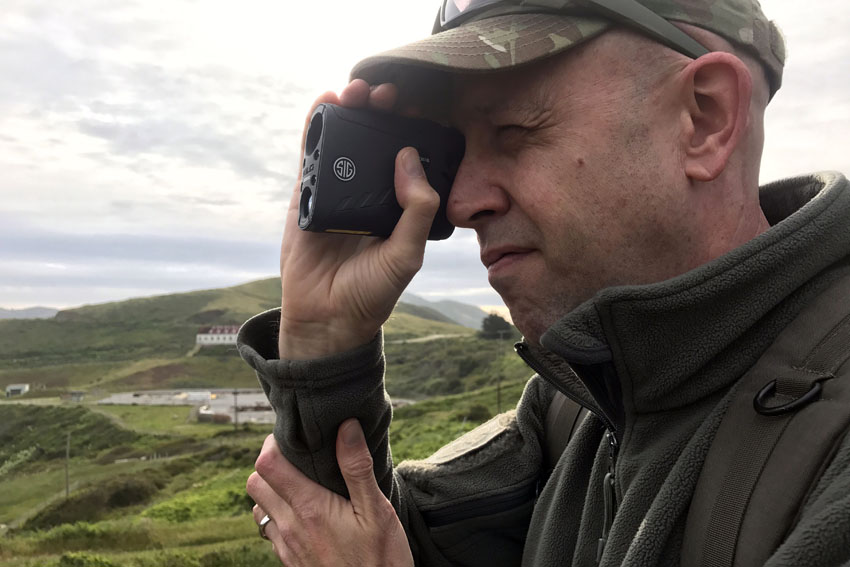
I’ve had the chance to take the Kilo 2000 out on a couple of range trips, where the exact distance to targets was unknown. In one case, I took it out with me to some BLM (Bureau of Land Management) land, south of San Jose. I placed a few targets out using the unscientific method of “walking to place the targets until I couldn’t see my camp site,” or “dropping them when I got tired of carrying them.”
I then returned to my camp site and ranged them with the Kilo 2000 before dialing my values in and I managed to hit them within 1 shot on everything under 800 yards and within 2 shots on the two placed beyond 800 yards. Just a note, the distances were 372.4 yards, 423.1 yards, 657.0 yards, 839.4 yards, 1013.5 yards and 1061.1 yards.
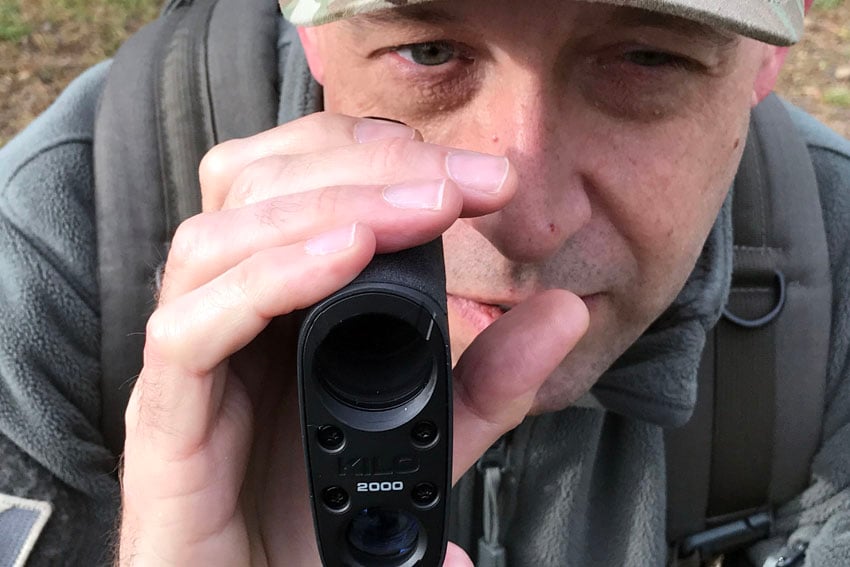
Using the Kilo 2000 is dead-simple; find the target with the rangefinder, press the Range/Power button on top and record the data in my range sketch. With all but the 1061.1 yard targets, I was able to get an accurate reading on first try. With the 1061.1 yard target, I had a little difficulty holding the reticle still enough to get a reading, until I went prone, at which point it wasn’t a problem.
If you hold down the range button, it continuously scans what you’re looking at. While this is a nice feature, it doesn’t do much when you’re shooting at stationary targets, but the utility is obvious for things like hunting.
My other range trip was to private land, where I had rough estimates of the distances from the shooting platform to the steel down range. In that trip, the Kilo 2000 basically served to confirm or refine the distances to those targets.
General Reconnaissance
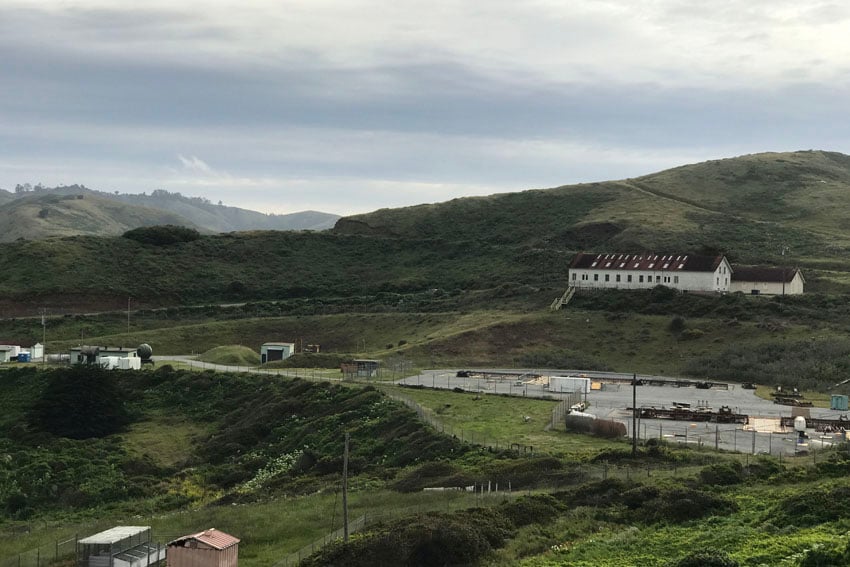
In Kilo 2000 terms, steel targets are considered to be “reflective,” in that they are man-made and reflect light more readily than a bush or a tree would. While on a hiking trip to the Marin Headlands, I did some ranging of buildings (also considered “reflective”), but I also easily determined the distance of specific spots on hillsides, trees and rocks, which would be considered “non-reflective.” These targets were as easy to range as the reflective targets, with the similar distance issues I ran into at slightly over 1050 yards; if I went prone or braced arms on something solid, I was able to get an accurate range right away.
I also tested it in my back yard, as I live on the side of a hill which overlooks the Haight-Ashbury neighborhood of San Francisco and thus have a decent view encompassing a wide swath of San Francisco terrain. I was able to determine distances to various buildings out to 1700 yards and wooded areas out to 1070 yards. I can see buildings from my deck that I know are about 4 miles away (like the Transamerica Building) and unsurprisingly, was unable to get a range distance on them.
PSA Uses
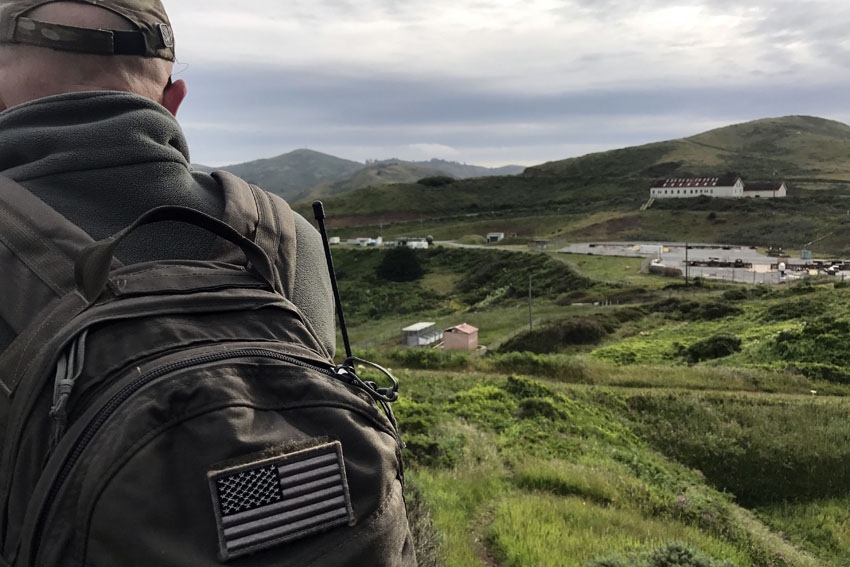
In performing a physical security analysis for a client, I found the Kilo 2000 to be very useful. It allowed for quick data gathering on the measurements of the client’s property, as well as for providing target locations for camera and light installation recommended in the final report. It definitely proved more accurate than my previous method of “pacing it out” and made for a very detailed report with great precision.
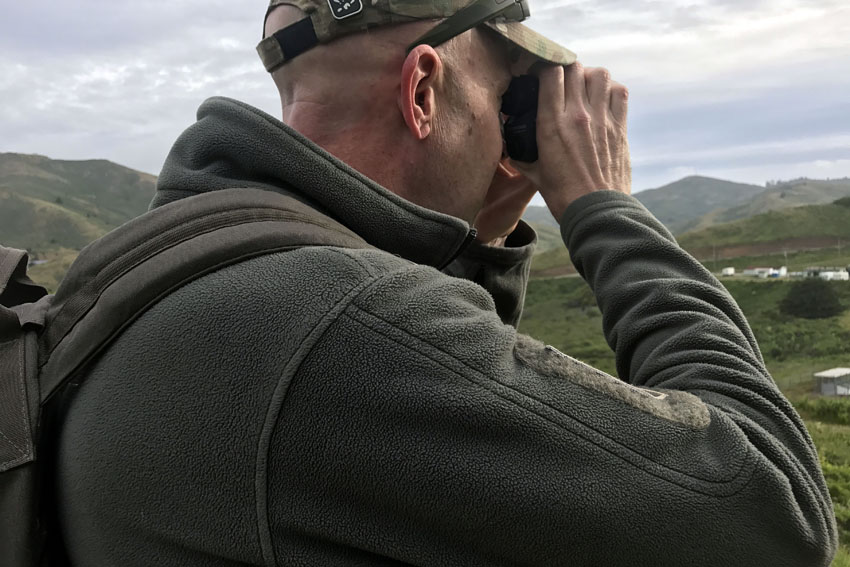
The magnification on the device also functions as a small hand-held monocle for basic examination of the target location from a distance, without raising any immediate suspicions amongst those working at the location. The size also allows it to be rapidly pocketed if someone close to you happens to notice you’re using it. Best of all, it just looks like a small video camera to people who may be passing by and doesn’t mark your activity as suspicious.
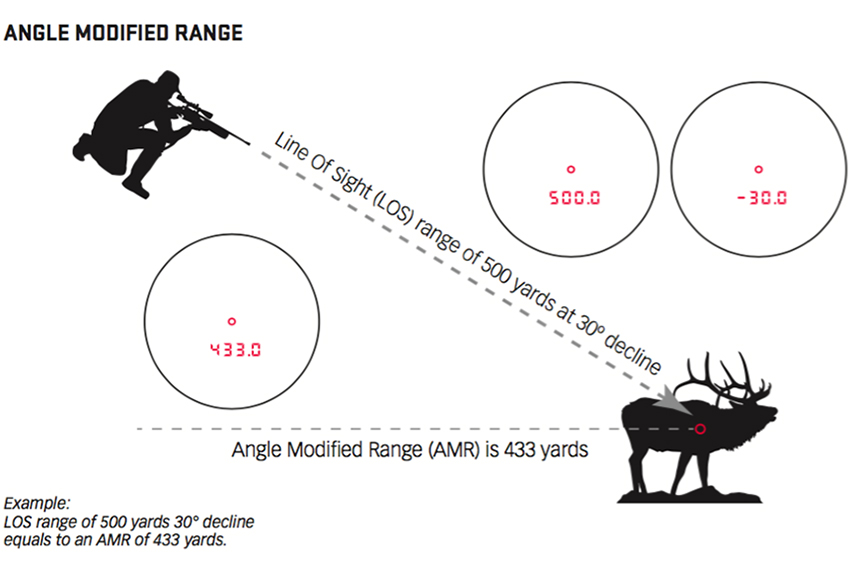
If you’ve ever done any high-angle shooting, you’re likely familiar with the additional layer of complexity these situations require for accurate impact on targets. The Sig Kilo 2000 can detect the angle you’re holding it at when ranging a target and if appropriate, offer up an “Angle-Modified Range” for that target.
The “Angle-Modified Range,” also known as the “Rifleman’s Rule,” is essentially an equivalent horizontal range to the target, determined by calculations made by the Kilo 2000. Traditionally, the Rifleman’s Rule has proven to be reasonably accurate for both bullets and arrows and in this implementation, it provides a quick means of getting on target. The Kilo 2000 also allows for exclusive “Line of Sight” mode, if you prefer to do the math on your high-angle shooting yourself.
Overall Takeaway
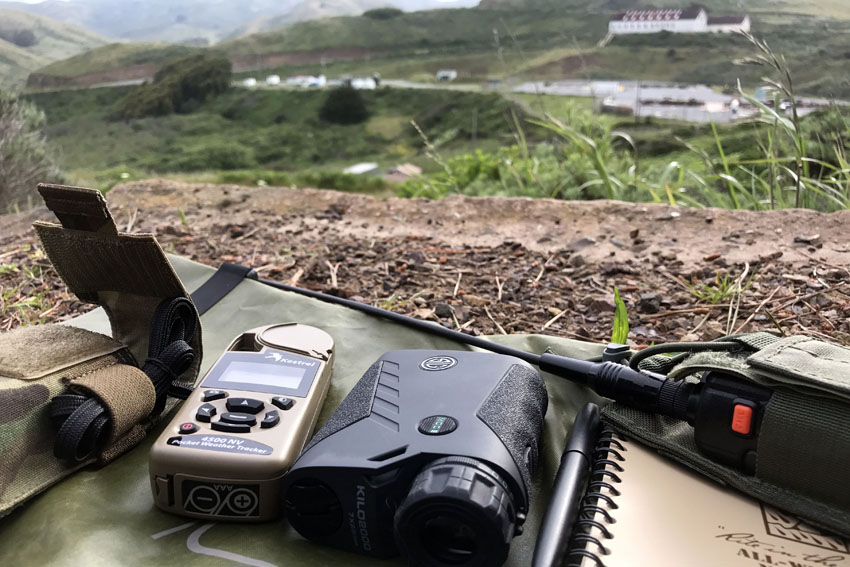
After a little over a month of using the Kilo 2000, I’ve already used it a great deal more than my old Nikon Prostaff 550. I’ve taken to generally keeping it in my EDC bag, as the 7.5 oz. weight is negligible. The ease of use is excellent; the Kilo 2000 comes out of the box measuring in yards and with AMR mode on. It features a programming mode allowing you to control the units of measurement, if for some crazy reason you prefer meters to yards, or you’d prefer to calculate your own adjustments for high angle shooting solutions.
You can also control whether you’d prefer to range the last target reading you gathered or the “best” target you ranged (which basically determines the target you were most likely to have been ranging, based on the readings taken when in scan mode) and you can define the OLED output level to your preferred settings. I played around with these settings, but in the end, found the default settings to be adequate for my purposes.
The Kilo 2000 comes with a lightly padded nylon carrying case, though I tend to not use that, in favor of just stuffing it in a pack or pant pocket. It uses one CR-2 battery and despite some extensive use over the past month, I still haven’t exhausted much more than 10 percent of the battery. I’ll likely swap out a fresh battery prior to this September’s 24 Hour SAC, but I expect I won’t need to change it before then.
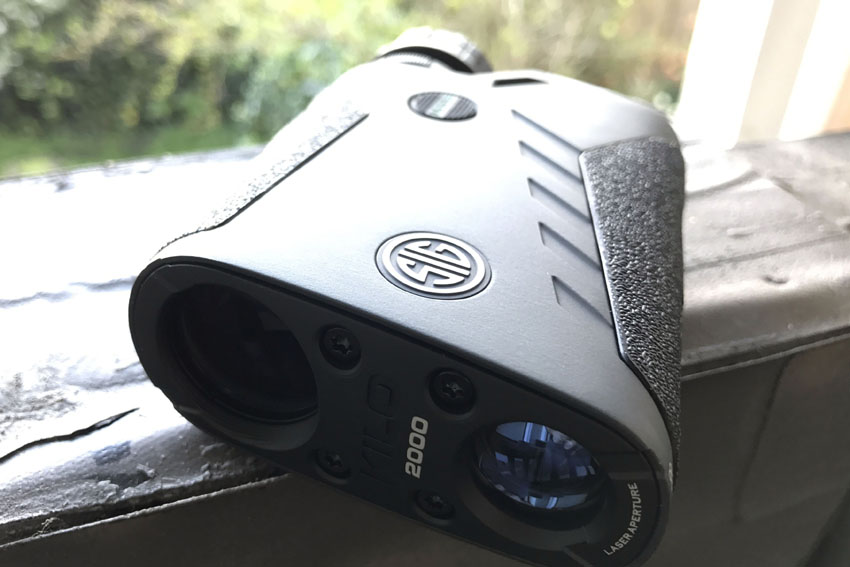
Overall, I’ve found it to be the perfect solution for what I wanted a laser rangefinder to do. I also don’t feel any of the buyer’s regret I feared I might, despite knowing there is a more powerful, more robust rangefinder from Sig out there. About the only thing that I’d change with regard to what it shipped with would be the padded nylon pouch.
The pouch features one attachment loop on the back, which could possibly be better served by some PALS webbing. The latching system is also a little bit tedious to work. Still, there are aftermarket pouches out there that can provide for these needs, so I may pick one of them up at some point. For now, the Kilo 2000 is exactly what I wanted and at a reasonable price and delivered quickly, via the magic of Amazon Prime.
Editor-in-Chief’s Note: Matthew Sharp is a Plank Owner and Life Member at ITS and goes by the username “viator.” He lives in The People’s Republic of Northern California (for now) and enjoys long range shooting, carrying heavy objects great distances and fuzzy little puppies.






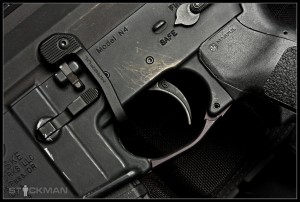

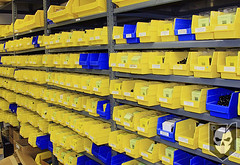
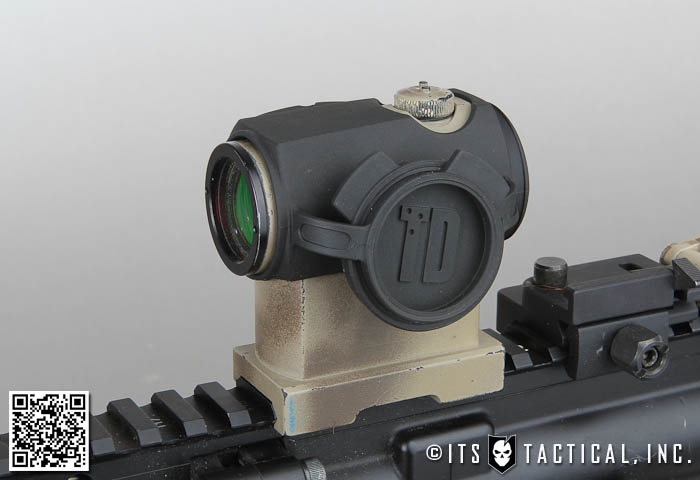

Discussion